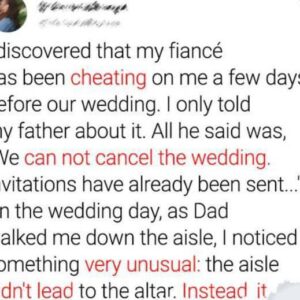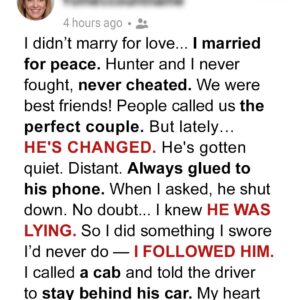“Sit down, Courtney. Your hair is distracting everyone again,” said Ms. Whitman sharply, pointing at the front desk.
Courtney Johnson froze. The 12-year-old girl from Atlanta had walked into class that morning with her hair freshly braided, beads clinking softly with each step. Her Aunt Marlene had stayed up until midnight braiding it — “It’s our crown, baby,” she’d said, smiling proudly.
But to Ms. Whitman, it wasn’t a crown. It was “unprofessional.”
“I’m not distracting anyone, ma’am,” Courtney said quietly, touching her braids. “It’s just my hair.”
The classroom went silent. The other kids glanced at each other nervously. They’d seen Ms. Whitman lose her temper before.
“You’re being defiant,” the teacher snapped. “Take a seat. We’ll handle this right now.”
Courtney hesitated. Her heart pounded. She didn’t understand what she’d done wrong.
Ms. Whitman opened a drawer, pulled out a pair of silver scissors, and said coldly, “If you can’t follow school rules, I’ll fix it myself.”
The class gasped.
Courtney took a step back. “Please, Ms. Whitman—”
“Sit down!” the teacher shouted, slamming the scissors on the desk.
Tears welled up in Courtney’s eyes. She looked around the room — no one moved. Even her best friend, Kiara, stared at her desk, frozen with fear.
And then — snip.
The first braid fell onto the floor. Courtney’s chest tightened. Snip. Another one. The beads clattered like tiny screams against the tiles.
By the time Ms. Whitman stopped, Courtney’s head was uneven and patchy, her scalp exposed. The laughter from the hallway echoed faintly through the door, but in that classroom, there was only silence and horror.
“Now maybe you’ll learn respect,” the teacher muttered, throwing the scissors into the drawer.
Courtney stood up slowly. Her eyes burned, her lips trembled, but she said nothing. She picked up a fallen braid, held it close to her chest, and walked out of the room without permission.
Outside, the cold air hit her face, and she finally broke down in tears.
When the bell rang that afternoon, her mother, Denise Johnson, was waiting by the gate — and froze.
“Courtney,” she whispered, her voice cracking. “What… what did they do to you?”
Courtney could barely speak. “She… she cut my hair, Mama. She said it was against the rules.”
Denise’s eyes widened in disbelief — and rage.
“Get in the car,” she said, her voice shaking. “We’re going back inside.”
And that was the moment everything changed.
Denise stormed into the school with Courtney by her side, every step echoing with fury. Secretaries tried to stop her, but she kept walking. “Where is she?” Denise demanded. “Where’s Ms. Whitman?”
The teacher was still in her classroom, pretending to grade papers. When she saw Denise, she froze.
“You cut my daughter’s hair?” Denise shouted. “Without my permission?”
Ms. Whitman stood up, clutching her clipboard. “Her hairstyle violates school policy—”
“That’s not a policy,” Denise snapped. “That’s discrimination!”
Her voice shook with emotion. Courtney hid behind her, clutching her mother’s sleeve.
The commotion drew the attention of Principal Howard, who came rushing down the hall. “Mrs. Johnson, please, calm down—”
“Calm down?” Denise turned to him, tears in her eyes. “Look at my baby! Look what your teacher did!”
Howard’s expression changed the moment he saw Courtney’s uneven hair. “Oh, my God,” he muttered.
“I’m calling the district office,” Denise said firmly. “You better believe I’m not letting this go.”
By the end of the day, photos of Courtney’s head spread across social media. Hashtags like #JusticeForCourtney began trending. Parents, students, and even community leaders rallied behind her.
That evening, local news vans surrounded the school. Reporters shouted questions as Denise and Courtney left the building.
Ms. Whitman, meanwhile, sat in her car, watching the chaos unfold. For the first time, she began to realize the gravity of what she’d done — but it was too late.
The next morning, the district superintendent arrived. Ms. Whitman was suspended pending investigation, and the school issued a public apology.
But Denise wasn’t satisfied. “An apology can’t undo trauma,” she said to the cameras. “They humiliated my child. There has to be accountability.”
Courtney didn’t speak much that week. She wore a hat to school, her confidence shattered. Kids whispered around her, some sympathetic, others too scared to get involved.
Then one day, she found a note in her locker from Kiara:
“You’re brave, Courtney. Everyone saw what she did. You didn’t deserve it. Keep your head up.”
It was small, but it mattered. For the first time in days, Courtney smiled faintly.
Weeks passed, and the case reached national headlines. Civil rights groups called it a violation of cultural identity. The school board organized a meeting to address the issue, inviting students and parents to speak.
Courtney sat in the front row beside her mother, hands trembling. When her name was called, she stood up.
Her voice was quiet but steady. “My hair isn’t just hair. It’s part of who I am. My aunt braided it for me with love. And when my teacher cut it, she didn’t just cut my hair — she cut my pride.”
The room was silent.
Even Ms. Whitman, who was sitting in the back, wiped her eyes. She had resigned a week earlier, unable to face the backlash.
Principal Howard walked to the microphone next. “Courtney, on behalf of the school, I want to say I’m deeply sorry. We’ve failed you. From today on, we will ensure no child faces this kind of humiliation again.”
The board announced new cultural sensitivity training for all staff and a revision of the dress code to protect cultural hairstyles.
Reporters applauded. Parents hugged Courtney and her mother. Denise, holding back tears, kissed her daughter’s forehead. “You turned pain into change, baby,” she whispered.
Later that night, back home, Courtney looked at her reflection in the mirror. Her hair was starting to grow back — soft, short, but beautiful.
She smiled and said softly, “Aunt Marlene was right. It is my crown.”
Her mother smiled behind her. “And now the whole world knows it.”
In the following weeks, Courtney’s story inspired others to share their own experiences. Schools across the state reviewed their policies. And though scars remained, Courtney walked through the hallways with her head high again.
For the first time since that awful day, she didn’t feel small. She felt powerful.
Because in fighting for herself, she had changed something much bigger than one classroom — she had taught the world a lesson in dignity.
And that was how a twelve-year-old girl, armed with nothing but courage and truth, reminded everyone that respect starts where prejudice ends.


